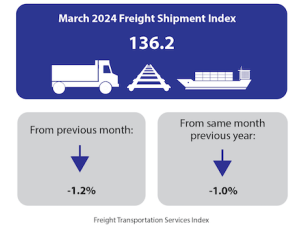The panel, appointed by the Department of Transportation, also recommends annual check-ups on health and driving records as a requirement for continued driving.
According to the American Heart Association, nearly 800,000 Americans have a stroke every year. In addition, there are between 200,000 and 500,000 "mini-strokes," so-called transient ischemic attacks or TIAs, which usually last less than an hour.
Both conditions carry an increased risk of suffering another stroke, which could have deadly consequences on the road. And strokes may also damage motor skills and cognitive function.
The exact crash risk in someone who's recovered from a stroke isn't clear, but the risk of stroke is six times higher than normal during the first year following a TIA, the researchers found.
Their message seems to be "better safe than sorry."
"We can't just put people in cars immediately after a stroke and see how well they drive," said Dr. Meheroz Rabadi, a neurologist at the University of Oklahoma, who was on the panel. "We can't really answer the question of crash risk because we don't have the study to do that."
The regulations for people wanting to drive after stroke differ between commercial and private drivers. Commercial drivers fall under the regulations of the federal government because they drive on national highways, while everyone else falls under state regulation.
The current guidelines for commercial drivers, laid out in 1988, suggest they should stay off the road for at least one year and should only return if they pass psychological tests.
To update the recommendations, the U.S. Department of Transportation's Federal Motor Carrier Safety Administration brought together a panel of researchers, whose findings are outlined in the journal Stroke.
Although neuropsychological tests and driving simulations proved to be helpful in predicting whether or not a stroke patient would pass an actual driving test, Rabadi explained that putting the rubber to the road is still the gold standard for driving ability.
"A driver could pass a driving simulation, but still fail an on-road driving test," said Rabadi. "There are more obstacles on the road, so drivers need to make different judgments than in the simulation."
The new recommendations would make recertification after a stroke a little more rigorous than it has been so far and could add some costs to employers, said Lamont Byrd, director of safety and health at the Teamsters Union.
"It's going to add a bit more pressure to employers and drivers," said Byrd, who was not on the panel. "It will be a bigger challenge to overcome to get people back to their driving jobs."
Ken Brown, of the New York Department of Motor Vehicles, explained that for noncommercial drivers, regulations vary state to state, but that in New York there are no restrictions on driving after stroke. Those decisions, he said, are usually left up to the physician and family involved.
Commercial driving warrants stricter regulation, because drivers spend more time on the road, and their vehicles are typically harder to operate and potentially deadlier if a crash occurs.
Christie Cullinan, of the American Trucking Associations, said focusing on commercial drivers is also important because the job entails a lifestyle that could put some at greater risk for stroke.
"Life on the road can lend itself to eating unhealthy foods, there's less time to cook and less time to exercise," said Cullinan. "But it is evolving. We are seeing more programs to help drivers adopt healthier lifestyles, and the drivers are showing that they want to take part." (Reuters)







